What is a rhomboid flap?
The rhomboid flap is classified as a local transposition flap – a flap that moves laterally about a pivot point into an adjacent defect. This lateral movement differs it from a rotation flap. The donor site wound is closed directly under minimal tension. Other examples of transposition flaps include:
- Bilobed Flap
- Z-plasty
- Posterior thigh flap for ischial pressure sores
The rhomboid flap is also called the Limberg Flap after Professor AA Limberg of Leningrad. He first published on the subject in 1928.
Rhomboid Flap Design with Pictures
“How to design a rhomboid flap” is a common clinical scenario in exams and surgical training. The purpose of the surgery is to ensure resection of disease (cancer, pilonidal) and closure of the defect under minimal tension.
ThePlasticsFella technique allows 3 key design steps this operation, as described below with pictures.
How to design a Rhomboid flap (with Pictures):
Draw a rhomboid shape around the lesion
A rhomboid is a symmetrical shape made up of two angles of 120° and two of 60°. Basically, its a square pushed to the side 30°.
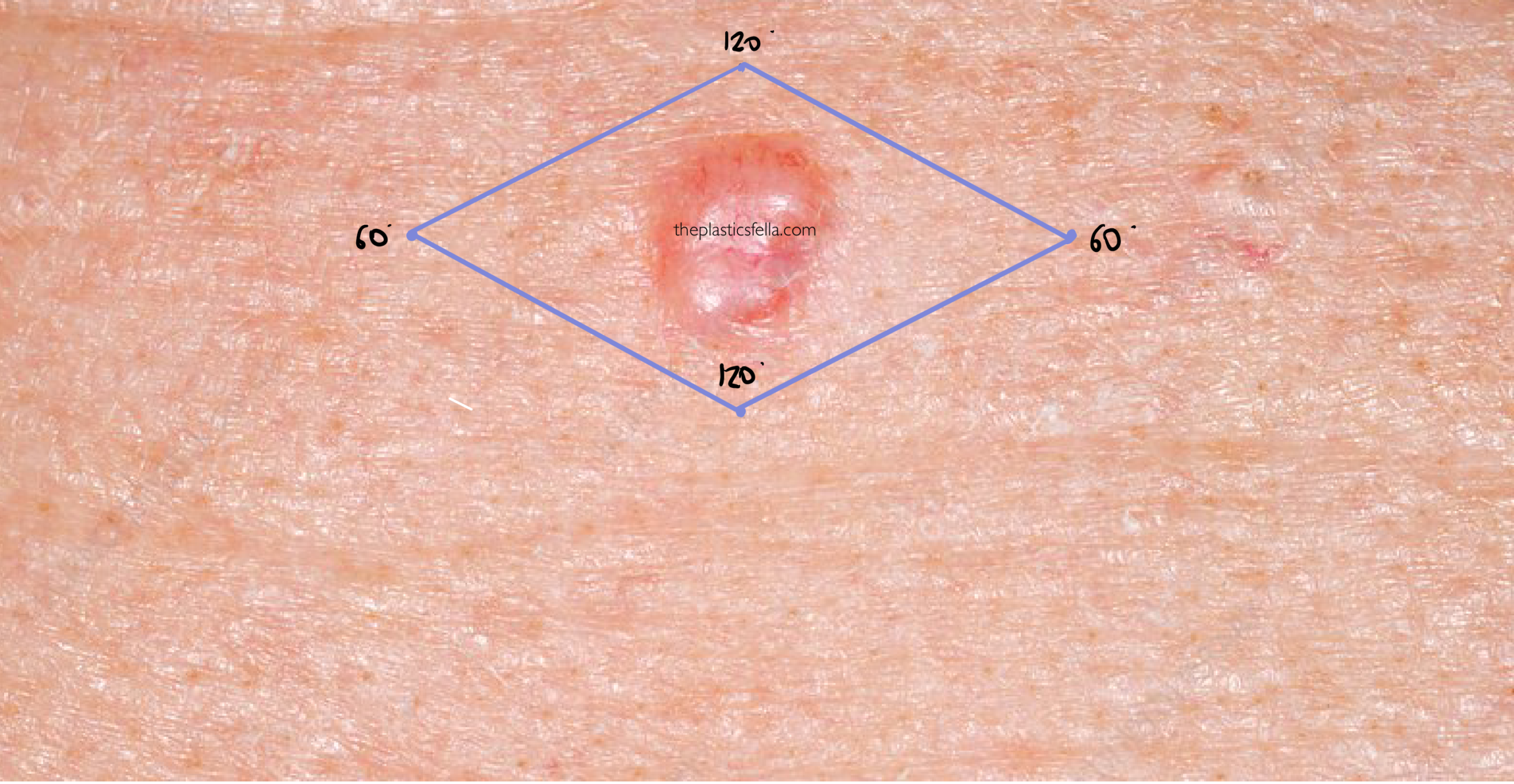
Draw the Flap
The rhomboid flap has a “leg” to stand on, which is bent at the knee. There are two important measurements to allow an easy colsure.
Distance 1 is the thigh = distance between the 120° angles
Distance 2 is the shin = distance between the 120° to 60° angle.
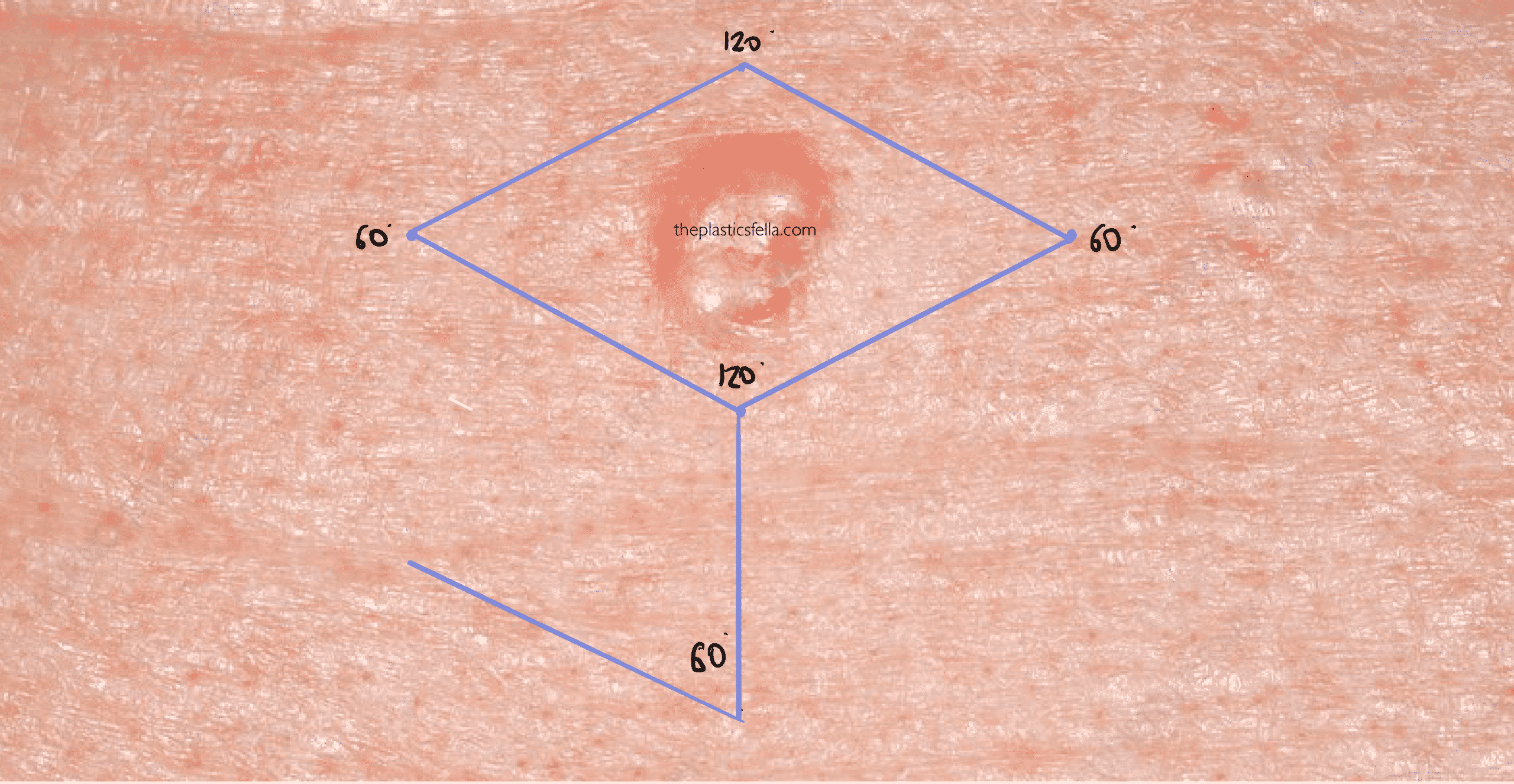
Excise the Lesion and Connect the Letters
Once the lesion is excised, elevate the flap and join the letters. This will allow closure under minimal tension.
There are two letters to connect: A-A, B-B.
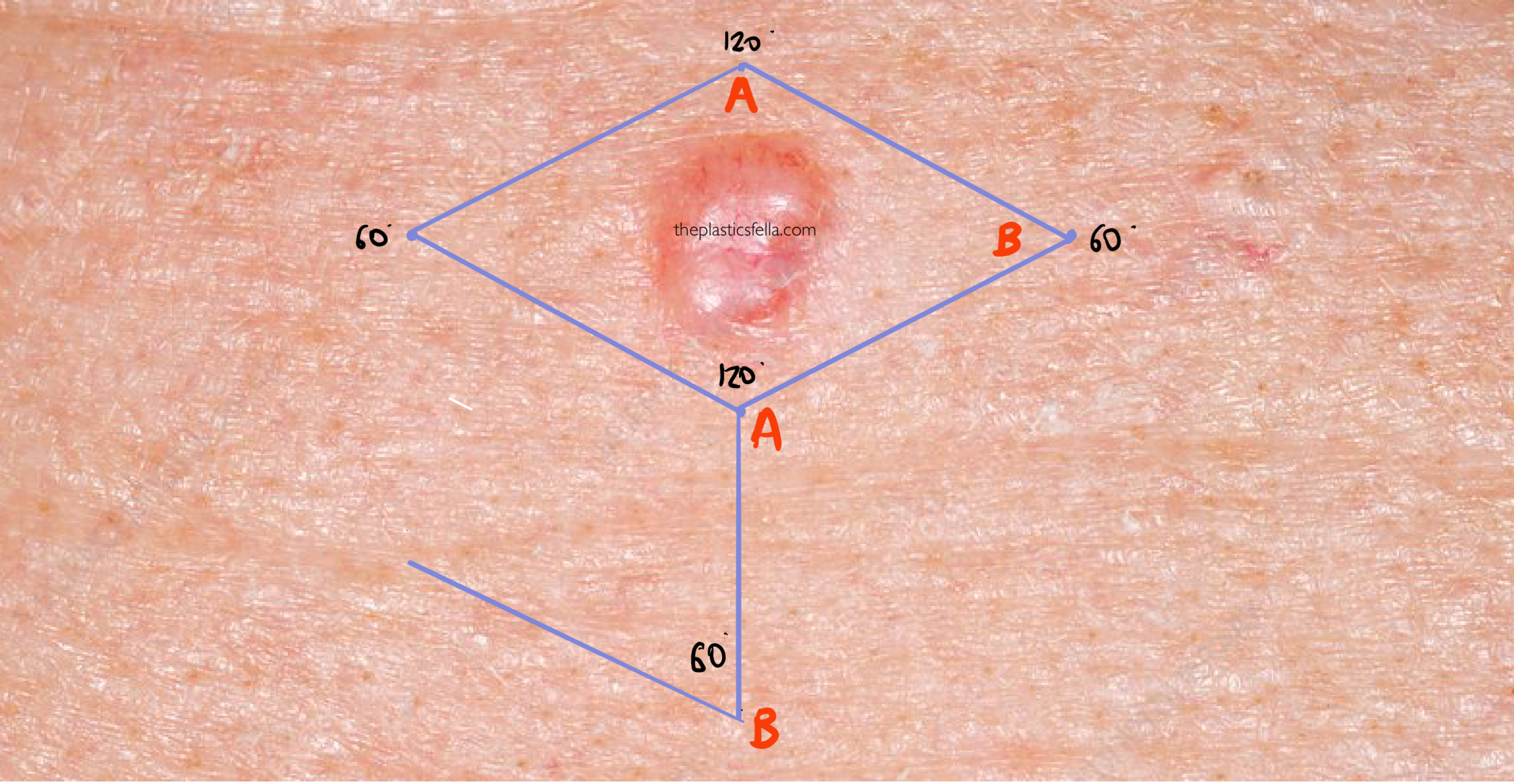
Flap Closure
The final closure of a rhomboid flap should be under minimal tension. The donor site is a straight line scar that is closed primarily. The blood supply to the flap is indirection by the red arrows.
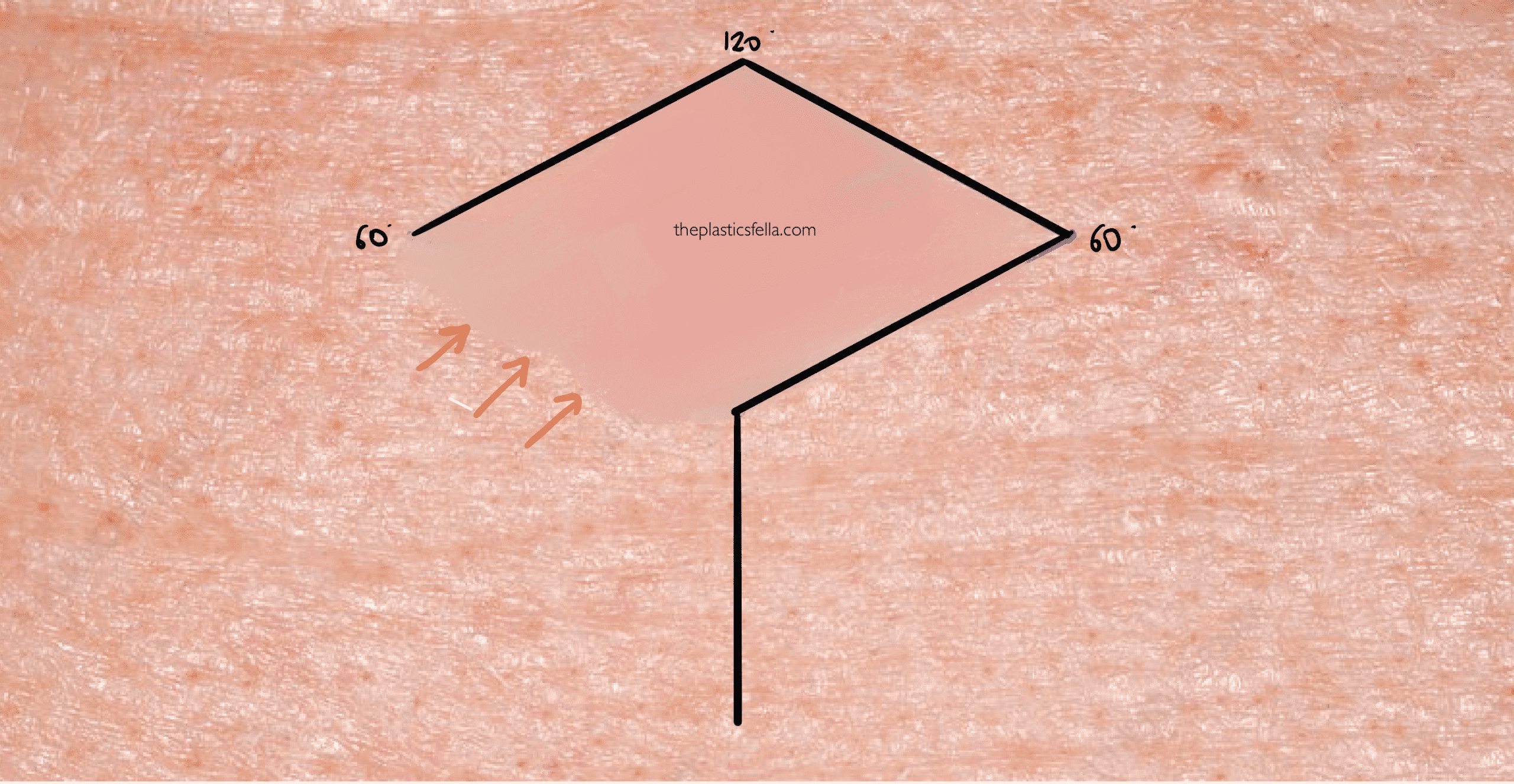
Rhomboid Flap Examples with Pictures
These types of transposition flaps are versatile and can be used in many different clinical situations.
Rhomboid Flap for Skin Cancer on Temple
This is a workhorse for temple/forehead lesions.

Rhomboid Flap for Pilonidal Disease/Sinus
The Rhomboid flap for sacrococcygeal pilonidal sinus is useful and reproducible in terms of postoperative pain, infection rates, and early return to work with almost nil recurrences2. It has also been described for the treatment of hidradenitis suppurativa
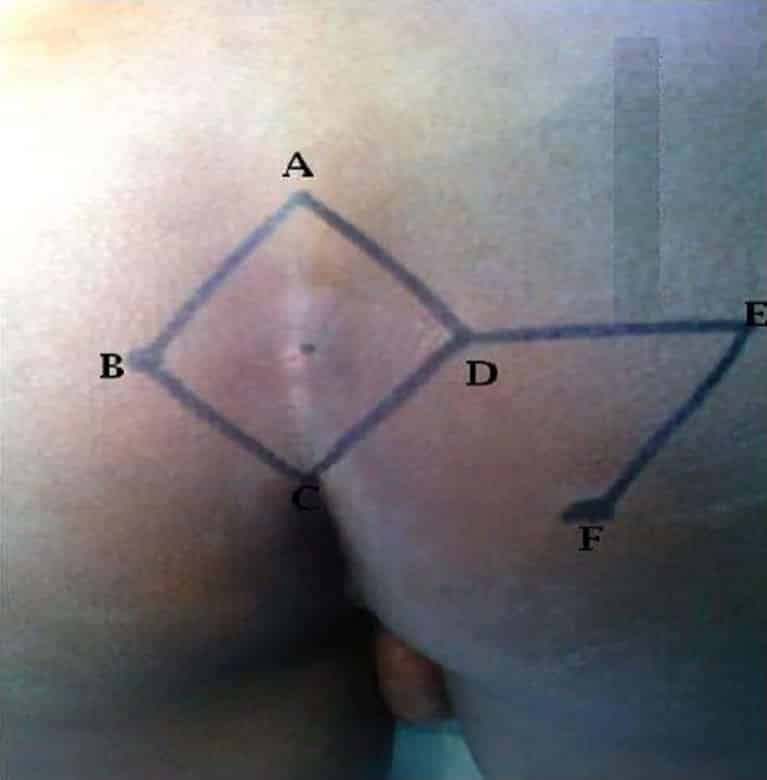
Flap Modifications
Since Limberg’s first description in 1928, a significant number of modifications have been developed. Common modifications include the double and triple flap – these techniques are described below with pictures.
Dufourmentel Flap Modification
In 1962, Claude Dufourmentel modified the rhomboid flap. The different between Limber and Dufourmentel design is as follows:
- distal border of the flap is placed on the line that bisects the angle between the short diagonal of the rhomboid defect and its adjacent side
- the acute angle of the flap is still 60°.
- This modification widens the pedicle width and increases the safety of the flap.
Double Rhomboid Flap

Triple Rhomboid Flap
The triple rhomboid flap has been used since its initial report as an effective means of covering local defects. One aesthetic advantage, when compared to skin grafts, is lack of alopecia and skin tone alterations. Furthermore, the flap is designed to avoid scar contracture and to enable coverage of larger defects than it would be possible with a single rhomboid flap.
References
- 1. Chasmar LR. The versatile rhomboid (Limberg) flap. Canadian Journal of Plastic Surgery. June 2007:67-71. doi:10.1177/229255030701500207
- 2. Aithal S, Rajan C, Reddy N. Limberg flap for sacrococcygeal pilonidal sinus a safe and sound procedure. Indian J Surg. 2013;75(4):298-301. doi:10.1007/s12262-012-0489-5
- 3. Aithal SK, Rajan CS, Reddy N. Limberg Flap for Sacrococcygeal Pilonidal Sinus a Safe and Sound Procedure. Indian J Surg. May 2012:298-301. doi:10.1007/s12262-012-0489-5
- 4. Aydin O, Tan O, Algan S, Kuduban S, Cinal H, Barin E. Versatile use of rhomboid flaps for closure of skin defects. Eurasian J Med. 2011;43(1):1-8. doi:10.5152/eajm.2011.01


